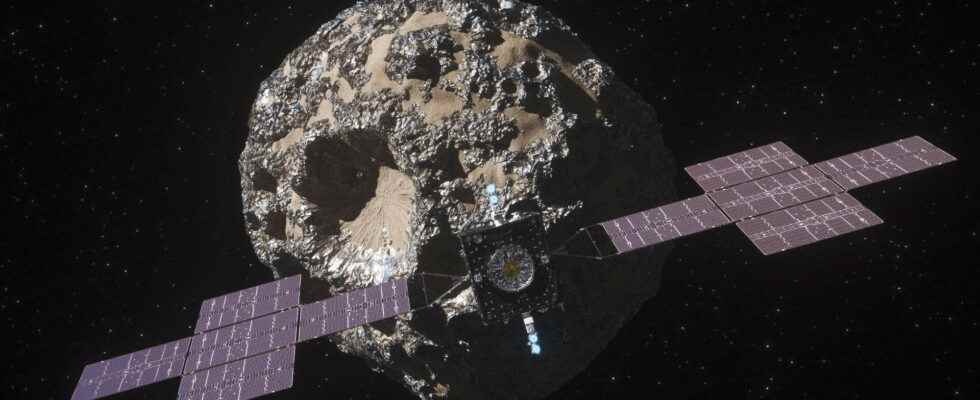The United Nations International Planetary Defense Legal Group is led by French scientist Alissa Haddaji. Faced with a threat that is not only science fiction, it details the measures supposed to avoid a generalized catastrophe.
How would humanity react if an asteroid headed straight for earth, putting it in immense danger? This is the question on which the United Nations International Legal Group for Planetary Defense, led by French scientist Alissa Haddaji, is working.
Her role is “to decide on the best possible scientific mission to push this asteroid”, says the scientist who also heads the Harvard & MIT Space Consortium, invited this summer to the Fleurance Astronomy Festival (Gers).
This reflection under the aegis of the UN is carried out in parallel with NASA’s DART experimental mission, whose ship must hit an asteroid at the end of September, to deviate its trajectory.
Read also: This asteroid is worth more than 7 million times the entire world economy
What risks should planetary defense face?
Alissa Haddaji. Planetary defense is concerned with knowing what to do in the event of a threat from an asteroid or comet. If we discover an object that is more than 50 meters in diameter and has more than a 1% chance of impacting the earth, we activate the SMPAG advisory group (Space mission planning advisory group, Ed), approved by the scientific committee. of the United Nations Council for Outer Space Affairs and composed of space agencies from different countries. If the asteroid is more than 300 meters, we speak of a continental impact, and if it is more than a kilometer, 25% of living species would be eradicated. If it is 50 meters, we therefore have a national risk in a broad way.
What methods are considered in the event of an asteroid threat?
It’s definitely not +Armageddon+, by blowing up the asteroid, because creating more pieces is not desirable. It would be possible to ram it and push it thanks to this impact, which the DART missions of NASA and Hera of the European Space Agency (ESA) will test very soon. If the asteroid is very big or you go very late, it would be possible to cause an explosion of a nuclear charge next to the asteroid, thus melting some of the rock which would break off and would push him to the other side, by reaction.
“
Space is a field where, in essence, everyone needs everyone
“
In what legal framework would such an intervention take place?
It is stipulated in the Space Treaty that it is forbidden to send a weapon into space. In addition, the Partial Nuclear Test Ban Treaty prohibits any nuclear explosion. If it turns out that we need to send a nuclear warhead, the United Nations Security Council would have to temporarily override these rules by authorizing a derogation from this treaty. We then find ourselves following the rules specific to the UN Security Council with 15 members, five possible vetoes. Of the 15 members, there must be at least nine who agree without a veto.
How would the decision be made?
Decision-making maps have been developed. The IAWN group (International Asteroid Warning Network, editor’s note), responsible for detecting asteroids and assessing the risks, would warn the United Nations and the SMPAG group as well as the politicians of the country or countries possibly affected. The decision will be taken at the political level on the advice of SMPAG.
Is space affected by current international tensions?
This is where we see the role of space. This is an area where, in essence, everyone needs everyone. This is one of its most valuable features. The fact that we have a marvelous Space Treaty dating from 1967, adopted by 111 nations, which says that space belongs to no one, that it is there for scientific freedom of exploration, makes it possible to find solutions even when there are tensions. The principle of the international space station, where all countries work together for a common goal of understanding the universe, is inspiring. With the current international tensions, maybe things will change, for the moment we don’t know. But we are in a field where knowledge guides, and where scientific experts have a say in decisions.
